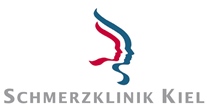.
Pain-nameless, suicide headache
Cluster headaches are among the most severe headache disorders and are characterized by severe pain attacks lasting 15-180 minutes that occur on one side in the area of the eyes, forehead or temple. The attacks occur with a frequency of one attack every other day to eight attacks per day. The pain is accompanied by at least one of the following symptoms occurring on the same side: redness of the eyes, watering of the eyes, nasal congestion, runny nose, increased sweating in the forehead and face area, constriction of the pupil, drooping of the eyelid, swelling of the eyelids and physical Restlessness with urge to move. The attacks occur periodically and frequently; one speaks of a cluster (cluster: English heap). In between there are headache-free periods of varying duration.
According to a survey by the cluster headache self-help groups (CSG eV) in Germany, on average it takes more than eight years until the correct diagnosis is made. Targeted, adequate diagnoses are often made very late or not at all, and effective therapies are therefore not available or are only initiated after many agonizing years of a pain odyssey, doctor-hopping, doctor-shopping, use of unconventional methods and serious complications. Additionally undiagnosed and mistreated or untreated, cluster headache is one of the most malignant and at the same time most disabling pain disorders in humans. Social isolation, personality changes, fear, depression, despondency, anger, sadness, despair and giving up the will to live are his diverse companions. Relatives usually suffer, frightened and desperate. Today, cluster headaches can usually be diagnosed quickly and precisely with specialized knowledge. There are very effective treatment options that, if known and applied appropriately, usually provide effective and quick help.
Cluster headaches are rarely found in medical education and training. The severely disabled law does not know the name of the severe pain disorder. Those affected are still considered the stepchildren of medicine. Even the German native language doesn't have a word for this pain. Cluster headache is the nameless pain . The result is pain illiteracy. It is often called a suicide headache: the extinguished will to live without hope describes the tragic individual consequence of a late diagnosis and ineffective treatment.
A key indicator of an efficient and modern healthcare system is that suffering and pain are quickly alleviated and patients are spared a medical odyssey, diagnostic delays and ineffective therapies. Serious and rare diseases in particular manifest themselves with complex phenomenology, have multi-causal development mechanisms and present with a wide range of physical and psychological effects. As a rule, they cannot be treated in a specialized, state-of-the-art manner across the board in every location. Without knowledge of contemporary diagnostic criteria, bundling of experience through specialization and implementation of current scientifically proven treatment paths, misdiagnoses and ineffective treatment courses easily arise.
In order to make current knowledge available in a highly specialized manner for care, the concentration of experience and knowledge in specialized competence centers is essential. Specialized competence centers can also provide interdisciplinary care for rare headache pain disorders at the latest scientific level and specifically develop and evaluate new therapy options.
Even though cluster headaches and other trigeminal autonomic forms of headaches are rare headache diseases compared to the common diseases migraine and tension headaches, overall a large number of people nationwide suffer from this serious pain disorder. In Germany alone, it is estimated that around 240,000 people suffer from cluster headaches over long periods of life, often many decades.
Further information on cluster headache diagnosis, development and therapy can be found in the patient guide “Successful against headaches and migraines”, as well as in more detail in “The Headaches”, both from Springer Verlag.
I wish you much success in dealing with your headaches!
Your
Prof. Dr. med. Hartmut Göbel



